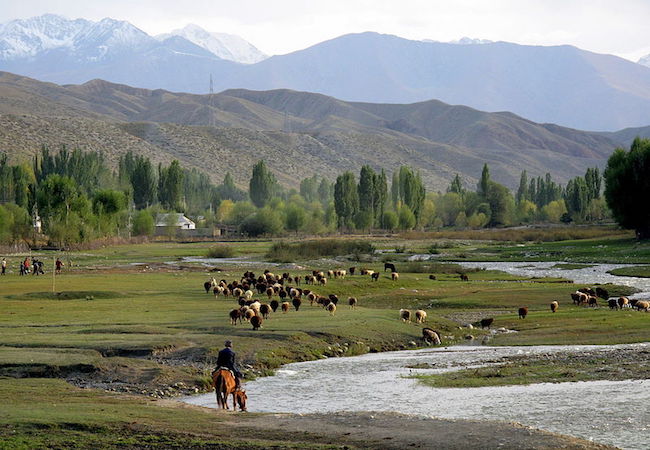
By Sabah Aslam
From the coasts of Caspian Sea to the rouged lands touching Afghanistan, there lies a belt of resource opulent countries, the Central Asian States. Comprising of five states, it is now becoming the new hub for social and economic development. As it lies at the heart of ancient silk route, central Asia also holds key importance in the new geo-economics of world as well. With combined population of more than 66 million and alone Uzbekistan accounting for approx. 29 million, Central Asia is an emerging market for investing companies.
Known as the five -STANs since all five states include -STAN at the end of their respective names. When these states got independence from the Soviet Union in 1991, Pakistan was among the first and few countries to recognize them and establish diplomatic relations with them. Since then, Pakistan and Central Asian countries enjoy healthy relations. Form visits of high-level delegations to signing of MOUs for establishing Joint Economic Commissions (JECs) Pakistan is fully acknowledging the role and importance of Central Asian states.
Geography plays a key role in the importance of these states located on the crossroads of East and West, Central Asian culture is an amalgam of ancient civilizations and modern era. Pakistan and the other STANs have a lot in common. Deeply connected with the bond of the religion, Pakistan and Central Asia, share many similitudes in culture. For instance, Sufism is enrooted in both societies. The architecture, cuisine, arts and handicrafts and even the dresses are somewhat similar. The languages also contain words and structures that are common. Thus, implying that both have immense potential of bilateral co-operation. For this, cross-cultural integrating policies and measures will boost the relations.
Out of many cross-cultural programs, Students’exchange programs can be very beneficial. Pakistan in 1992-93 started Special Technical Assistance Programs, under which apart from language courses, diplomacy, banking and accountancy expertise were also exchanged. Programs were fully funded by the government of Pakistan. Presently, Central Asian Faculty Development Program had 7% of its fellows from Pakistan in Phase I. Similar programs can help improve the relationship between Central Asia, at not only state level but also it will be beneficial in context to people to people diplomacy.
Economic diplomacy stands as one of the guiding principles for Pakistan’s foreign policy now, hence the already important trade and commerce now stands even more important between the two societies. Presently, Pakistan’s trade volume is almost 58.4 USD in region with exports comprising of larger numbers, indicating the Central Asia can be very favorable market for Pakistani exporters and investors. Kazakhstan being the largest trade central Asian partner of Pakistan, is followed by Tajikistan and Turkmenistan. This trade and commerce between the two can contribute a lot in economic development of the countries and uplifting the standard of living.
Pakistan now is lying a greater emphasis on tourism industry than ever before. It has also been a driver for development in Central Asia. Travelers from across the globe are now visiting the region because of its unique cultural heritage and landscape. The number of visitors to Central Asia is ever increasing as it increased from 2 million visitors in 2010 to 6 million in 2016. Pakistan has also aims at a single tourist visa for all Central Asia Regional Economic Cooperation (CAREC). The promotion of tourism for strengthening of economic and cultural ties across countries and generation of employment and business opportunities had been the priorities under CARCE 2030.
After Washington’s venture on War on Terror and Pakistan becoming the pivot of it tables got turned. When Pakistan experienced the ricochet of Uncle Sam’s policies in Afghanistan , there seemed a decline in Pakistan’s heed towards the Central Asia. Affected by terrorism and its export from across the border with severe internal security challenges, discourse of Pakistan’s foreign policy took a major shift. Pakistan’s primal objective was to secure its internal and external parameters. After more than a decade, the dark clouds are dispersing from Pakistani skies and it is rising from the dungeon of bloodshed.Now is the time for Pakistan to revamp its foreign policy framework and extend its diplomatic arms across the regions. Since both societies can benefit and can bring robust advancements to their socio-economic fabric by cooperating with each other. Pakistan should thus align its foreign policies with the overall shift in global politics. Since East now holds much important on international scenario, Pakistan and Central Asian co-operation will stand for a more promising future of region.
Sabah Aslam is the Founder & Executive Director of Islamabad Institute of Conflict Resolution (IICR), and member visiting faculty Dept. of Peace & Conflict Studies, NUML, and School of Politics & IR, Quaid-I- Azam University, Islamabad.




